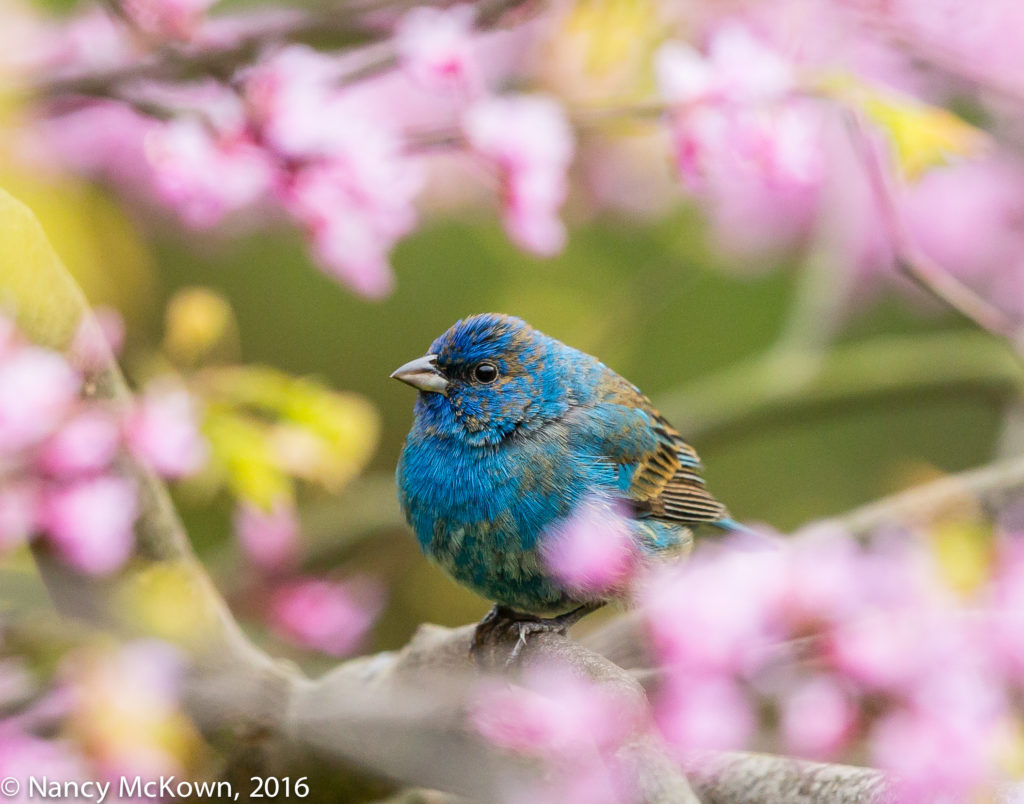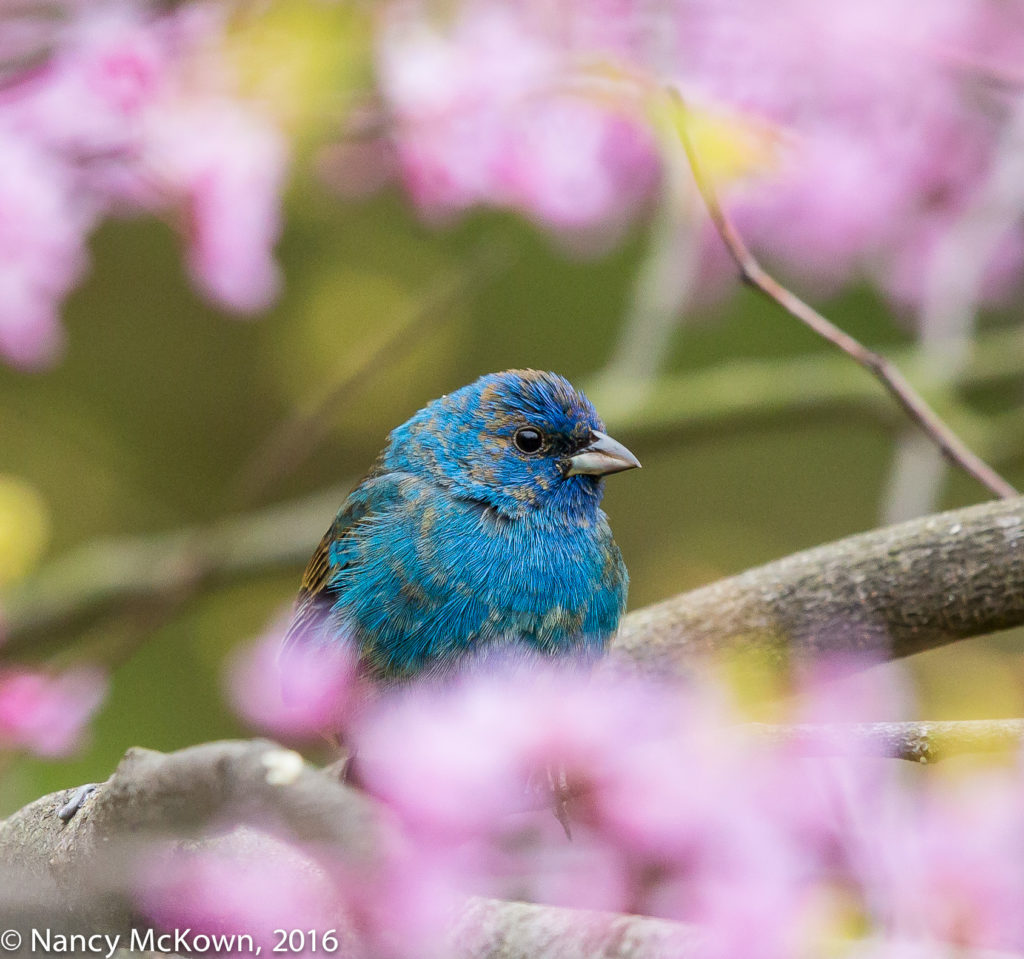Photographing an Indigo Bunting
It was a dreary day when I took these photos, and that matters when photographing birds with blue plumage. On a sunny day, you can easily see blue, purple, and aqua hues glimmering on the feathers of male Indigo Buntings. The more light, the more intense the colors appear to be. But it’s really just an illusion. There are no blue pigments in the feathers of Indigo Buntings, or any of the blues we see in nature.

Lots of Brown with the Blue due to Low Light.
ISO1000; f/6.3; 1/400 Second.
It’s All About Light
Indigo Buntings (and all other birds of blue) are unable to manufacture blue pigments. Pigment is what gives us true color. We see blue only because of the reflective structure of the Indigo Bunting’s feathers. When light waves fall on his feathers, the feather structure breaks the different colors of the light apart. Only blue tones are reflected back out. (The other colors of visible light are absorbed by the feathers.)
You can see in these photos patches of black and brown colors because when there’s little or no light, the feathers of Indigo Buntings are actually all brown and black. I was a little disappointed that the feathers of this male were not more colorful for the camera, but he was sitting amongst glowing Red Bud flowers, and that helped.
Encircling Floral Frames
I love showy flowering Red Bud Trees. The long graceful twigs are wide spread, slim and tender, with heart shaped leaves leaving plenty of room for the camera lens to intrude. Its fruit consist of purplish black pods in which are nested tiny, bird attracting black seeds. These understory beauties are one of the earliest to flower in our shaded yard and consequently attract a lot of migrating avian pollinators. Tiny rosy purple flowers even grow on the Redbud’s bifurcated trunk.

Blue Plumage Lackluster due to Low Light.
ISO1250; f/6.3; 1/400 Second
Framing Strategies
Some considerations when framing birds within branches and flowers are:
- The frame is essentially a wrap around intended to spotlight an eye catching subject and the beauty of its natural surroundings. It should accentuate and complement the subject.
- You can frame with flowers, shadows, dark patches- any defined area that can serve as an enclosing border. The fewer the distractions, the better.
- Since you control what your viewer sees, judicious cropping in post processing is an important part of framing.
- In addition to accenting and complementing the subject, the frame should give the photo context (in this case Spring).
- Texture, color and detail add emotion, thus engaging the viewer.
- Depth of field add to the sense that there’s a frame. Tight depth of field accentuates the front and back. Blurred background and foreground make the frame less noticeable.
- You can prune and rearrange flowers and foliage to create the perfect perch. If you do not, you will likely have to maneuver the lens to focus tightly within lots of branches.
Attempting to frame a bird in a picture perfect natural setting takes timing and perservance, and no small amount of luck. It’s worth the effort, even on those days when the bird’s plumage colors are muted.









He’s gorgeous, even in his black-blue-brown appearance, which is really interesting. Love the shots!!